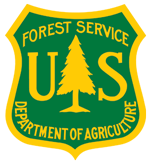Videos
Your Drop Matters
Just forty-five years ago, rivers in the U.S. were so polluted that some actually burned. In response, our country created the Clean Water Act amid other strong environmental legislation. Today, two-thirds of our population has never known a time when clean water wasn’t readily available. Despite improvements in the quality of drinking water, freshwater animals and habitats in the southeastern U.S. remain among the most imperiled on Earth. We have become complacent with institutional protections and haven’t challenged our personal behaviors. How can we solve the freshwater crisis starting in our own backyard? Video by TEDxChattanooga.
Rescuing Barrens Topminnows During A Drought
Dr. Bernie Kuhajda in the field discussing the plight of the endangered Barrens Topminnow as an important population threatened by drought conditions. Video by the Tennessee Aquarium.
Drought Prompts Endangered Fish Rescue
The Tennessee Aquarium and U.S. Fish & Wildlife Service launched a fish rescue on November 22. The historic drought conditions had reduced the number of locations where the federally endangered Laurel Dace are found. Most of the streams where these brightly colored fish are found have dried up, leaving only a few shallow pools. Only 18 Laurel Dace were recovered and brought back to the Tennessee Aquarium Conservation Institute for an "ark population," in case this species disappears in the wild. Hopefully these 18 fish will reproduce in the spring allowing scientists an opportunity to bolster the diminishing populations of Laurel Dace in Tennessee.
Tennessee Aquarium Conservation Institute - Freshwater Biodiversity
The warm waters of the southeastern United States are home to an amazing diversity of animals and habitats. The Tennessee Aquarium Conservation Institute (TNACI) works to protect and sustain the region's natural treasures and bring people of all ages closer to nature. Help us celebrate and care for these riches in our backyards.
Mapping our Rivers in High Definition
A project video produced by Tennessee Wildlife Resources Agency (TWRA) for Trutta Consulting LLC High Definition Stream Survey (HDSS) of the Caney Fork River below Center Hill Dam. The project was supported by the Cumberland Chapter of Trout Unlimited, Tennessee Department of Environment and Conservation and TWRA. We also worked with TWRA fisheries sampling crew to video and GPS their trout surveys that were completed at the same time as the HDSS project. This allows us to see the conditions that the fish were captured and determine what areas of the river are best for trout at different flow conditions.
Sentinels
Monitoring the Little Rivers of the Tennessee Valley. Video by Freshwaters Illustrated in partnership with the Tennessee Valley Authority.
Endangered Mussels Released into the Clinch River, Largest Release in Eastern US
Biologists from the Virginia Department of Game and Inland Fisheries (VDGIF), and partners from Virginia Tech, the Nature Conservancy, and the U.S. Fish and Wildlife Service stocked thousands of mussels into the Clinch River, Russell County. The Clinch River has more species of endangered freshwater mussels than any other river in North America. Elementary school students from Cleveland, VA, participated in the event, and learned about the many functions of mussels, including providing habitat for fish, becoming food for many other animals, and filtering and cleaning the water in our streams and rivers. Over 3,500 federally-endangered mussels were produced at the Department's Aquatic Wildlife Conservation Center in Marion, Virginia.
Tangible Landscape as a tool for modeling and science communication
In this webinar the Conservation Biology Institute introduce Tangible Landscape, a technology that links an interactive physical model with GRASS GIS through a real-time cycle of interaction, 3D scanning, geospatial computation, and 3D rendering.
Materials to review prior to meeting
Find here a PDF of App LCC funded research that will be discussed during the workshop.
Lessons Learned in Landscape Conservation Design in the Pacific Northwest
Webinar featuring Tom Miewald-Landscape Conservation planner.
Data Needs Assessment Foundational Research for Appalachian Region
The Data Needs Assessment research project was undertaken to review a variety of resources on conservation planning - such as datasets and tools - and provide packages of products, data, and identified gaps to improve conservation planning in the Appalachian Region. A suite of core conservation planning products and data from principal investigators at Clemson University are found below. These products and information generated from this foundational assessment were incorporated into the Interactive Conservation Planning and Design effort and in the drafting of the regional conservation plan for the Cooperative.
LANDFIRE Data Applications for Research in Fire Ecology, Forest Mgmt in California
Brandon Collins presents the second in a series of webinars that LANDFIRE co-hosts with the California Fire Science Consortium. Collins is a USFS Research Forester based in Davis, CA, whose interests involve characterizing effects of fire and fuels treatments on forests at both the stand and landscape levels. He says, "My research intends to provide meaningful information to managers interested in improving forest resiliency and incorporating more natural fire-vegetation dynamics across landscapes."
Protecting the Tennessee River Gorge
A video documenting why the Tennessee River Gorge Trust's work is necessary.
Conserving Imperiled Aquatic Species in the UTRB
A team of U.S. Fish and Wildlife Service scientists, with assistance from U.S. Geological Survey, have developed a collaborative conservation strategy examining cost-effective approaches for efforts to conserve and manage 36 imperiled freshwater fish and mussel species in the 22,360 square-mile Upper Tennessee River Basin.
Environmental Flows from Water Withdrawals in the Marcellus Shale Region
The rivers and streams of the Central Appalachians are home to more than 200 species of fish and other aquatic life. They also provide a reliable source of drinking water, recreational opportunities and associated economic benefits to people living in large cities and surrounding communities. Stream Impacts from Water Withdrawals in the Marcellus Shale Region
Assessing Vulnerability of Species and Habitats to Large-scale Impacts: CCVA
New vulnerability assessments for 41 species and 3 habitats in the Appalachians are now available. The conservation community can view and search each of these assessments by relative raking or vulnerability scores, conservation status ranks, state and subregion of assessment, and higher taxonomy. In addition, principle investigators NaturServe compiled the results of 700 species assessments previously completed by other researchers as well as assessments on several habitats.
Classification and Mapping of Cave and Karst Resources
Cave and karst systems are unique environments that occur throughout the Appalachians. They provide habitat for a diverse array of species and are an important source of domestic water supply for Appalachian communities. However, a lack of classification and mapping information on these ecosystems creates a significant barrier to conservation.
Riparian Restoration Decision Support Tool
An innovative riparian planting and restoration decision support tool is now available to the conservation community. This user-friendly tool allows managers and decision-makers to rapidly identify and prioritize areas along the banks of rivers, streams, and lakes for restoration, making these ecosystems more resilient to disturbance and future changes in climate. It will also help the conservation community invest limited conservation dollars wisely, helping to deliver sustainable resources.


























